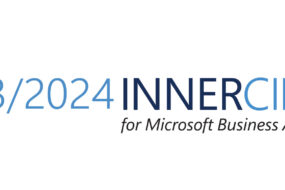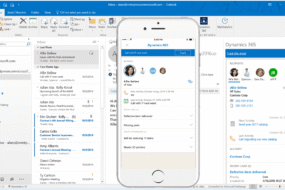Although Dynamics 365 was not specifically designed for the SME customer, we engage every day with our SME customers who are always interested in Microsoft’s offering. Most of these conversations begin with an explanation of the terms and concepts used in Customer Engagement… or what we called CRM.
The basics of CRM
For most SMEs the world of CRM is unknown. We must both discover new software but also integrate from our processes. Indeed, it is necessary to adapt its old marketing, sales and human resources processes to digital.
Thanks to Dynamics 365, the digital transformation is smooth. Especially since we provide you with a whole team of experts to train and accompany you.
However, it is necessary to know a few vocabulary words that will enrich your daily language.
Lead
A lead is a commercial contact. It can be someone you meet in a salon, a contact from a form, or a Linkedin profile that interests you.
We can compare a lead to a lead, a clue that must be qualified to know if that person can become a real prospect.
Opportunity
When a prospect gets serious we call it an opportunity. Translate here as a business opportunity.
An opportunity can be several things:
- A future customer who is ready to buy your product or service.
- A company that within its business can include several business opportunities. Every opportunity must be properly addressed.
- An existing customer who has a new need, a new problem that you can address by selling your services or products.
sum
An account is everything that covers contacts, opportunities and various information. Generally an account is a business. Within the latter you will find contacts, opportunities and data about this company and the relationships you have with it.
If you delete an account, you delete all related data.
Contact
A contact can be a lead, a prospect an opportunity but also a part of a project or sale. In B2B, a contact is always linked to an account while in B2C it can be autonomous.
However, with Dynamics 365 you can modulate all these fields according to your activity. Dynamics offers processes and naming that are unanimous as their efficiency and performance are recognized.
entity
An entity is a “thing,” a data and registration field. Leads, opportunities, accounts and contacts are entities. In other words, it’s a generic term that you’ll find when you want to create a customer journey or relationships.
form
A form is a data field. For example, in Dynamics 365, when you create a new contact you fill out its form:
- Name and surname
- Phone number
- Where you met him
- His email address
- A comment
- Etc.
Thus, each record in Dynamics 365 is followed by a specific form.
posting
The display is a data view. For example, you can view accounts based on the number of sales you make. Or, show customers who haven’t made a purchase in a while. On Dynamics 365, displays are unlimited and can be customized.
Qualifying
Qualifying something in Dynamics 365 is an important step. Let’s take a few examples.
If you qualify a lead, it implies that the lead is serious. Thus, the latter will move from lead to prospect status. If you do the same thing with a prospect, it will create an opportunity.
to disqualify
Quite simply, disqualifying is the opposite of qualifying. For example, you disqualify a lead when the lead is not at all interested in your offer.
Activities
The activities are all the actions carried out by your teams and their contacts. Let’s take the example of a salesman and his lead, the activities will be:
- Lead recording in Dynamics 365
- Exchanges (by email, phones)
- Appointments
- The qualification of the lead as a prospect. Here, all activities will be switched to the entity of the new prospect.
- Send a quote
- The signing of the quote
- Etc.
With the activities you can find out where your salespeople are and know the full history of a relationship or sales process. For example, you can analyze stock history to improve your sales processes.
Workflow
A workflow is a series of automated, stimuli-triggered tasks. For example, you can automate emailing when someone has filled out a contact form. Then, when you detect that the email has been opened, a notification is automatically sent to one of your salespeople. Thus, the latter will contact this lead to qualify or disqualify it.
Sales process
A sales process is a series of logical steps that salespeople follow to maximize their chance of closing a sale. In fact, Dynamics 365 lets you create as many processes as you want. Especially in other areas such as marketing and human resources.
Dashboards
The dashboards in Dynamics 365 are essentially chart holders. Indeed, the point of a dashboard is to show you in a global way key information on a specific topic.
B2B and B2C
The first means that your company does business with other companies.
The second means that your business is doing business with individuals.
Duplicats
Duplicats are your enemies. Indeed, it is simply duplicates that will pollute your CRM and your performance.
Smb
SMB is simply the acronym for “Small, Midsize and Corporate Business”. In other words, more French-speaking: SMEs.
In conclusion, most of these words are surely already familiar to you. But what is certain is that you will discover new ones every day!



